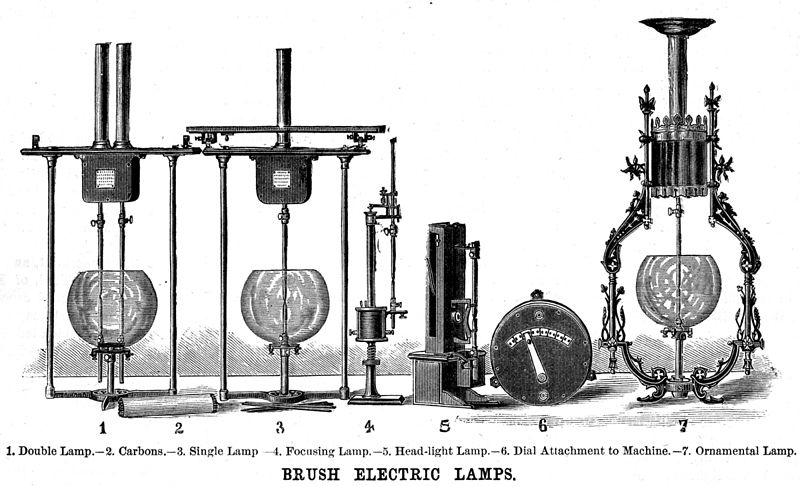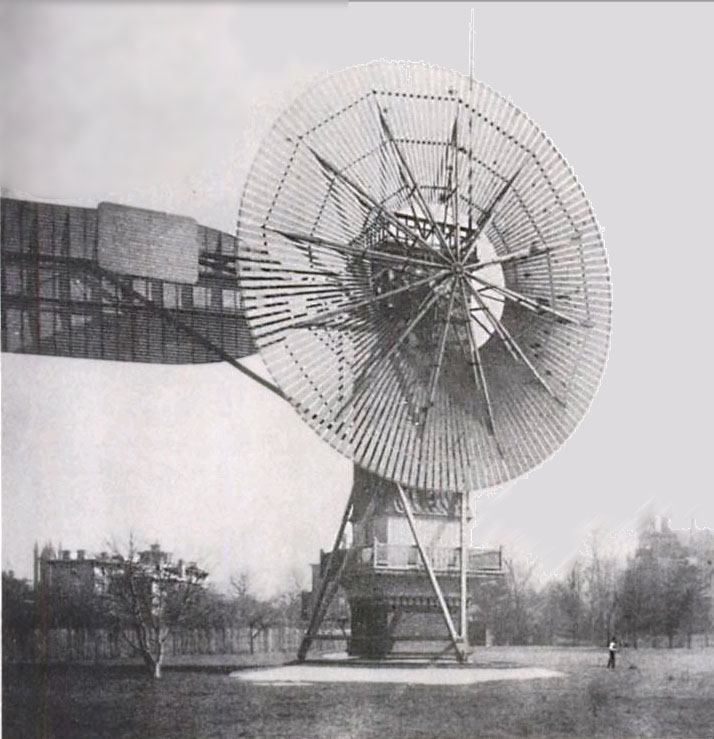Charles F. Brush

 Enlarge
Enlarge
Charles F. Brush (1849-1929), a U-M engineering alum from 1869, is considered one of the primary innovators of commercial lighting thanks to his arc lamps. This inventor and entrepreneur overcame both technical and social obstacles to provide the framework for the first-ever case of a utility selling electricity from a central plant to multiple consumers.
“Brush was born in Euclid Township, Ohio. He built his first static electric machine at age 12 and constructed his first arc light in high school. After graduating from the University of Michigan on an accelerated schedule, Brush worked as an iron ore salesman and experimented on an improved dynamo in his spare time. Brush`s dynamo was key to a commercially viable lighting system and was widely used.”1
There was a lot of pushback against early electrical lighting – many oil industry investors feared that their demand would dry up, while others scoffed at the very notion of an oil alternative ever catching on.
Probably the biggest challenge, though, was swaying public opinion; many early adopters feared the bulbs and arc lamps because they were so bright that they hurt their eyes. As it turns out, many such customers would stare into the light sources for extended periods.
“One reason people stared was that they wondered where the light really came from,” Benjamin Bailey noted in his memorial for Brush. “They thought there must be some trick to it – the light must come from oil, and where was the oil supply?”
Charles Brush was responsible for many design improvements to early arc lamps, and produced patents for the design of, and electrical generators (dynamos) for, the lamps. His arc lamps were deemed superior to all existing versions in 1878 by the Franklin Institute of Philadelphia, and became the standard for many decades.

 Enlarge
Enlarge
He installed the first electric light system in the United States in Cleveland, Ohio, in 1879, and founded the Brush Electric Company in 1880. By 1881, his arc light systems could be found in New York, Boston, Philadelphia, Baltimore, Montreal, Buffalo, San Francisco, Cleveland and other cities, producing public light well into the 20th century. Brush’s system was lighting Broadway two years before Thomas Edison’s Pearl Street Station, the first central power plant in the U.S., began lighting New York.
“Although the filament light bulb eventually replaced the arc light for many uses, the arc light still is commonly used in searchlights and cinema projection. Of Brush`s more than fifty inventions, many were improvements on the arc light. After retiring from Brush Electric Company in 1891, Brush improved Carl Linde`s process for extracting oxygen from liquid air and became founder and first president of the Linde Air Products Company. He also was known for his invention of a more efficient basic storage battery.”2
In addition to his accomplishments with the arc lamp, Brush built the first automatically operated wind turbine generator in 1888 to power his Cleveland mansion. It was the first home powered by electricity in Cleveland. He also pioneered the first piezo-electric featherweight stylus, and later in life, wrote papers about the theory of gravitation.

 Enlarge
Enlarge
He was a member of numerous professional societies, including the American Institute of Electrical Engineers (now IEEE), the American Society of Mechanical Engineers, and the American Institute of Mining and Metallurgical Engineers, and a fellow of the American Academy of Arts and Sciencies, the American Physicists Society, and the British Academy of Arts. He was inducted into the National Inventors Hall of Fame in 2006.
Charles Brush established the Charles F. Brush Foundation for the Betterment of the Human Race with a $500,000 endowment. He was also chairman of the American Philosphical Society’s fundraising campaign, so named shortly before his death.
The public’s wariness of the new technology caused many obstacles, but Brush and others of the time managed to make electrical lighting a common commodity by the end of the 1880’s. But even then, the Electrical Engineering department’s third chair, Benjamin Bailey, still studied for his engineering degree primarily by kerosene lamplight. Widespread electricity had only come to campus in 1897.
1-2Charles F. Brush, National Inventors Hall of Fame.
 MENU
MENU 
